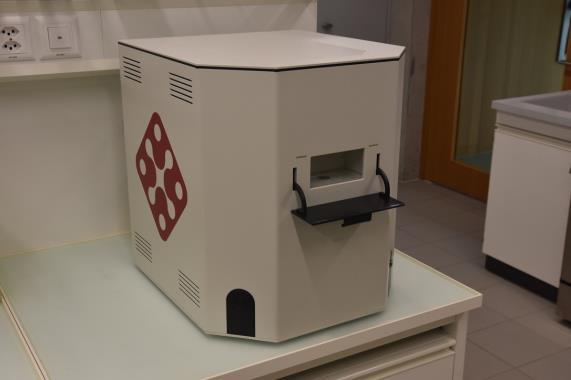
2 minute read
A New Thermodynamical Framework for Improved Aqueous Flow Battery Modelling
Organic redox flow batteries (ORFB) show great promise as a low-cost, sustainable energy storage device, with longer expected lifetime compared to competing storage technologies [1]. The aim of this work is to provide a better understanding of the thermodynamics of aqueous electrolytes, in order to predict more accurately the performance and lifetime of these batteries. The ICP collaborates in this regard with the FlowCamp consortium, a research and training project funded by the European Union’s Marie Sklodowska-Curie funding programme. FlowCamp involves 11 partner organisations from 8 different countries. Research in FlowCamp aims to improve materials for high-performance, low-cost next-generation redox-flow batteries.
Contributors: G. Mourouga, X. Yang, R. P. Schärer, E. Baudrin, J. O. Schumacher, T. J. Schmidt Partner(s): ETH Zurich, Univ. Grenoble-Alpes, JenaBatteries GmbH, Univ. Picardie Funding: European Commission, Horizon 2020, Marie Skłodowska-Curie Training Networks Duration: 2018–2021
Advertisement
The limitation of many flow battery models stems from the use of species concentrations for voltage or transport predictions. Formulating a battery model based on species concentrations implies making the dilute solution hypothesis, where the electrolyte would remain in a hypothetical ideal state and species would mix without interactions:
Interactions are captured by correcting concentrations with an activity coefficient , which is solute-dependent and needs to be measured experimentally. The interactions affecting the freezing point of the solution, it is possible to calculate the activity coefficient by measuring the freezing point as a function of composition. Activity coefficients also affect the osmotic transfer of water across the ion-exchange membrane during battery operation.
Through the Nernst law, it is also possible to make more accurate cell voltage predictions when parameterizing calculations with activities rather than concentrations. The aim of our work in the FlowCamp project is to provide a thermodynamically consistent approach to the simulation of aqueous redox-flow batteries, including operating conditions, transport processes and thermal management.
ideal solution Real solution

Figure 1: Ideal solution (left): interactions are neglected / Real solution (right): electrostatic and short-range interactions affect electrolyte properties. Figure 3: Picture of positive (left) and negative (right) reservoirs after cycling. The height was initially equal.

Figure 2: Freezing point of Calcium dichloride as a function of composition and standard deviation from least-square regression. [1] X. Wei et al., “Materials and Systems for Organic Redox Flow Batteries: Status and Challenges,” ACS Energy Lett., vol. 2, no. 9, pp. 2187–2204, Sep. 2017.








